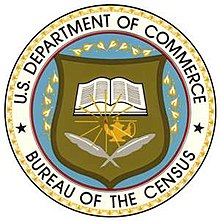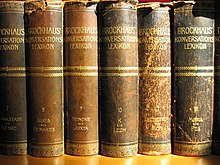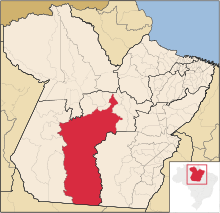User:BsBsBs/Cityproper

City proper is defined as a "locality with legally fixed boundaries and an administratively recognized urban status that is usually characterized by some form of local government",[1] [2] [3][4] or the area within the corporate limits. This definition was first used in the United Nations Demographic Yearbook 2000. [5] The previous edition, the United Nations Demographic Yearbook 1998, simply defined "city proper" as synonymous with "municipality". [6] Using the prevalent definition, "city proper" is not limited to a city, it can describe the complete area of any locality that fits the definition. Also, there is no universal definition for city.[7] The United Nations sometimes use the definition “the city proper is the single political jurisdiction which contains the historical city centre.”[8] In simple terms, city proper is the area within the city limits. It is not limited to the downtown or urban area, and it does not include the surrounding areas.
Usage[edit]

In its strict sense, city proper is used as a technical term in demography, the statistical study of human populations. Under the title "World Urbanization Prospects", the United Nations issues every two years estimates and projections of the urban and rural populations of all countries of the world. The book defines the population of a city proper as "the population living within the administrative boundaries of a city."[9] The book continues to say that "city proper as defined by administrative boundaries may not include suburban areas where an important proportion of the population working or studying in the city lives."[10]

In demography, city proper is one of the three basic concepts used to define urban areas and populations.[11] The other two are urban agglomeration, and the metropolitan area. In addition, there are Census Statistical Areas and permutations thereof.
A United Nations University working paper titled “Urban Settlement” [11] reviews the most commonly used data sources, and highlights the difficulties inherent in defining and measuring the size of urban versus rural populations. It says: “The city proper is determined by legal and administrative criteria, and typically comprises only those geographical areas that are part of a legally defined, and often historically-established administrative unit. However, many urban areas have grown far beyond the limits of the city proper, necessitating other measures. An urban agglomeration is the de facto population contained within the contours of a contiguous territory inhabited at urban density levels without regard to administrative boundaries’. Urban agglomerations are thus determined by density: the agglomeration ends where the density of settlement drops below some critical threshold. A still more comprehensive concept is the metropolitan area.”
Etymology[edit]

The term is a combination of “city” in the sense of “an incorporated administrative district” [12], and “proper” in the sense of “strictly limited to a specified thing, place, or idea” or “strictly accurate”[13] In encyclopedias, the term “city proper” is often used as an example to illustrate a meaning of the word “proper” as "tightly defined."
- Encarta: “narrowly identified, strictly identified and distinguished from something else” - stayed in the suburbs, not the city proper [14]
- Merriam-Webster: “strictly limited to a specified thing, place, or idea <the city proper>” [15]
- Dictionary.com: “in the strict sense of the word (usually used postpositively)”:- Is the school within Boston proper or in the suburbs? [16]
- Sensagent: “limited to the thing specified "the city proper [17]
- The Free Dictionary: “Being within the strictly limited sense, as of a term designating something: the town proper, excluding the suburbs.”[18]
Internationalization[edit]

Even though the UN has devised general guidelines, countries use country specific standards to designate urban areas, rural areas and city proper. The United Nations Demographic Yearbook is compiled using questionnaires dispatched annually to more than 230 national statistical offices. [11] These questionnaires ask for the country-specific definition of urban areas, rural areas and city proper.[19] This results in a multitude of definitions for "urban area," but (with the exception of China) little disagreement about "city proper". [20] Translated from the English and back, "city proper" often takes on different meanings in different parts of the world.
Misuse[edit]

Even in the English speaking world, there is considerable confusion about the term “city proper.” Even official city websites sometimes claim that ”the city proper is the area of the city where the population is the most densely populated” [21] - which is a common misconception. When articles are translated from other languages, “city proper” is often misused for the city center. [22]
Controversy[edit]


In some countries, city limits that act as the demarcation for the city proper are drawn very wide. This can be cause for recurring controversy. List of cities by surface area lists little known cities that are larger than many countries. By area, the city of Altamira, Brazil (population 84,000) is bigger than Greece. The City of Kalgoorlie-Boulder (population 32,000) covers more area than Hungary, Portugal, Austria or Ireland. While these examples cause limited debate, cities in China are a source of continuing disagreement.
The Chinese city of Hulunbuir in Inner Mongolia is recognized as the largest city in the world by area. According to the “Urban Settlement” working paper, “in 1986, to cope with growing administrative demands at the local level, China essentially reclassified counties as cities in order to allow local city governments to control the surrounding areas.”[11] The authors state that “the Chinese city of Chongqing is another case in point. Even though the municipal district of Chongqing has a total population of more than 30 million inhabitants, fewer than 6 million actually live in Chongqing city proper. Depending on which classification is used, Chongqing is sometimes listed as the world’s largest city and, in other cases, does not even appear in the top rung of urban population rankings.” As long as city proper is used as defined above, size and population density has no bearing on the meaning of the term. “Misconceptions and Complexities in the Study of China's Cities: Definitions, Statistics, and Implications,” an article that appeared in the Journal of Eurasian Geography and Economics illustrates and clarifies factors leading to misunderstanding and misconceptions regarding the number of inhabitants of China's major cities. [23] Yunyan Yang describes the problems one is faced with when interpreting population data of Chinese cities proper, using the example of Wuhan. [24] The drawing of administrative boundaries remains within the purview of a sovereign state.
See also[edit]
- Lists of cities
- List of cities by surface area
- Cities of present-day nations and states
- List of capitals by population density
- List of towns and cities with 100,000 or more inhabitants
- Historical urban community sizes
- List of cities by population density (Based on the entire city proper)
- List of largest cities throughout history
- List of metropolitan areas by population (based on study by Richard Forstall, Richard Greene, and James Pick)
- List of urban areas by population (list of contiguous urban areas of the world based on Demographia)
- Rank mobility index (measure of a city's change in population rank among a group of cities)
- World's largest cities (explaining alternative measures)
References[edit]
- ^ http://www.nationsonline.org/oneworld/most_pop_cities_usa.htm
- ^ http://esa.un.org/unup/index.asp?panel=6
- ^ http://millenniumindicators.un.org/unsd/demographic/sconcerns/densurb/densurbanNotes.htm
- ^ Demographic Yearbook 2005, Volume 57. United Nations. 2008. p. 2. ISBN 9210510992. Retrieved 2010-07-19.
{{cite book}}: More than one of|pages=and|page=specified (help) - ^ Demographic yearbook, 2000. United Nations Publications, 2002. 2002. p. 23. ISBN 9210510917.
{{cite book}}: More than one of|pages=and|page=specified (help); Unknown parameter|Author=ignored (|author=suggested) (help) - ^ Demographic yearbook, 1998. United Nations Publications, 1998. 1998. p. 292. ISBN 9210510895.
{{cite book}}: Invalid|nopp=610(help); Unknown parameter|Author=ignored (|author=suggested) (help); Unknown parameter|nopp=ignored (|no-pp=suggested) (help) - ^ http://www.merriam-webster.com/dictionary/city Merriam-Webster entry for "city"]
- ^ "Urban Indicators Guidelines" (PDF). Working Paper. UNITED NATIONS HUMAN SETTLEMENTS PROGRAMME. Retrieved 20 Jul 2010.
{{cite web}}: Text "location" ignored (help) - ^ World Urbanization Prospects. United Nations. 2004. p. 2. ISBN 9211413860. Retrieved 2010-07-19.
{{cite book}}: Check|isbn=value: checksum (help) - ^ World Urbanization Prospects. United Nations. 2004. p. 104. ISBN 9211413860. Retrieved 2010-07-19.
{{cite book}}: Check|isbn=value: checksum (help) - ^ a b c d David E. Bloom,David Canning, Günther Fink,Tarun Khanna, Patrick Salyer. "Urban Settlement" (PDF). Working Paper No. 2010/12. Helsinki: [[ World Institute for Development Economics Research
]]. Retrieved 20 Jul 2010.
{{cite web}}: line feed character in|publisher=at position 54 (help)CS1 maint: multiple names: authors list (link) - ^ http://wordnetweb.princeton.edu/perl/webwn?s=city
- ^ http://mw2.merriam-webster.com/dictionary/proper
- ^ Encarta example for the usage of “proper”
- ^ Merriam-Webster example for the usage of “proper”
- ^ Dictionary.com example for the usage of “proper”
- ^ Sensagent example for the usage of “proper”
- ^ Free Dictionary example for the usage of “proper”
- ^ [http://unstats.un.org/unsd/demographic/products/dyb/dyb%20questionnaires/Census_Metadata_E.doc Questionnaire on Metadata for Population and Housing Census ]
- ^ "DEFINITION OF "URBAN"" (PDF). United Nations. Retrieved 20 Jul 2010.
- ^ City of Saint John
- ^ Overview of Suzhou City
- ^ Kam Wing Chan. "Misconceptions and Complexities in the Study of China's Cities: Definitions, Statistics, and Implications" (PDF). University of Washington: Bellwether Publishing. Retrieved 20 Jul 2010.
- ^ Yunyan Yang. "Urban Labour Market Segmentation:Some Observations Based on Wuhan Census Data" (PDF). Wuhan: The China Review, Vol. 3, No. 2 (Fall 2003), 145–158. Retrieved 20 Jul 2010.
External links[edit]
- WHICH ARE THE LARGEST? WHY PUBLISHED POPULATIONS FOR MAJOR WORLD URBAN AREAS VARY SO GREATLY (Slightly outdated study that became the basis for List of metropolitan areas by population)
- Misconceptions and Complexities in the Study of China’s Cities: Definitions, Statistics, and Implications (An attempt to clarify China's population statistics, with special emphasis on the [hukou system])
- The urban transformation in the developing world (Nearly two-thirds of the world's urban population, more than one and a half billion people, live in the cities of the South. Within little more than a generation their number will triple)
